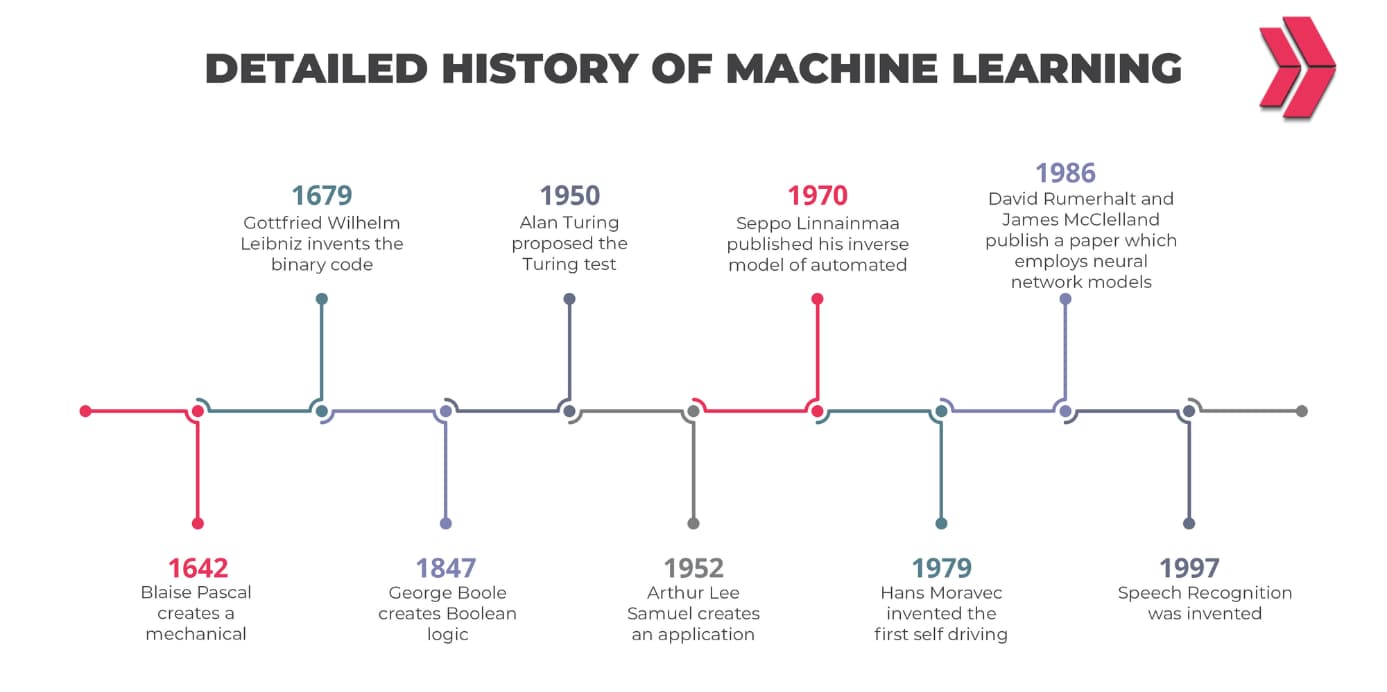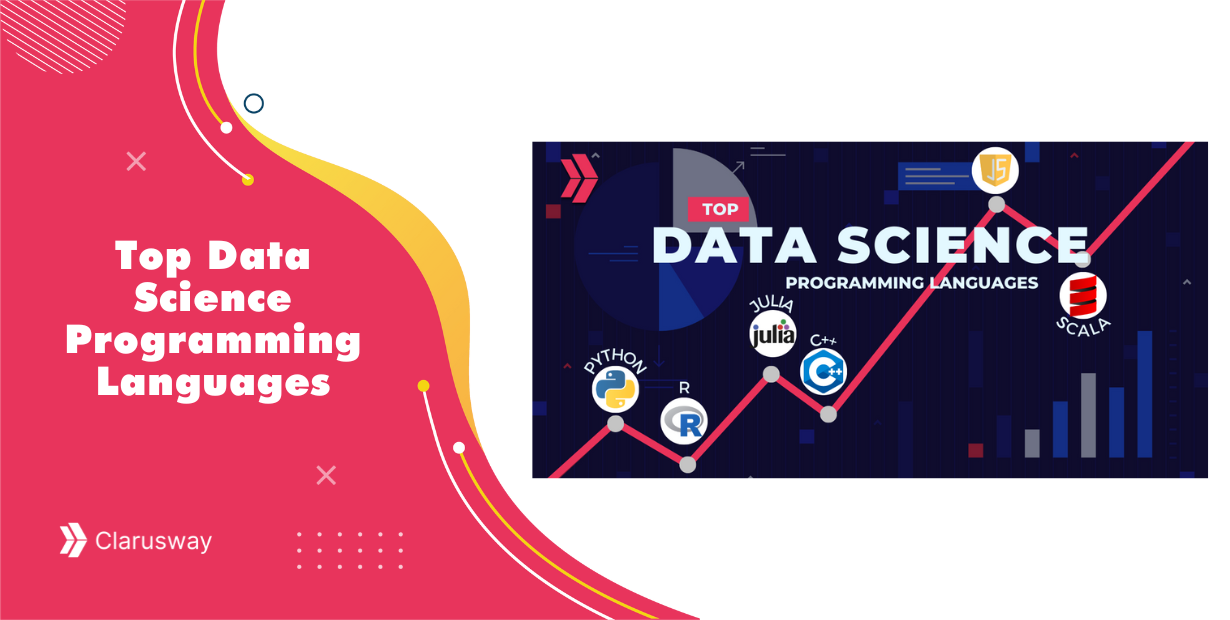In the ever-evolving landscape of technology, the concept of “Machine Learning” stands as a pivotal force driving innovation and reshaping the boundaries of what computers can achieve. This comprehensive exploration seeks to demystify the essence of Machine Learning and its multifaceted dimensions. From its origins and fundamental principles to its manifold applications across diverse industries, we embark on a journey to understand the intricacies of this transformative field.
Machine Learning, born from the visionary ideas of pioneers like Arthur Samuel in the 1950s, signifies a paradigm shift in the way computers learn and adapt. At its core, Machine Learning liberates us from the confines of explicit programming, enabling computers to glean insights from data and autonomously improve over time. As we traverse through the intricate tapestry of supervised, unsupervised, semi-supervised, and reinforcement learning, we’ll uncover the versatility of this technology and its significance across sectors like finance, healthcare, and beyond. Whether you’re a novice seeking to grasp the basics or an enthusiast aiming to explore advanced concepts, this journey into the realm of Machine Learning promises to shed light on its inner workings, applications, and the boundless opportunities it presents.

What is Machine Learning?
Machine learning is a method of teaching computers to learn from data, without being explicitly programmed. Machine learning works by training algorithms on large datasets to identify patterns and relationships within the data. These algorithms learn from examples and adjust their internal parameters to improve their performance over time. Once trained, the algorithms can make predictions or decisions based on new input data. The process involves data preprocessing to clean and prepare the data, selecting relevant features, and choosing appropriate algorithms. The trained models are then evaluated on separate test datasets to ensure their accuracy and generalization to new data. Through this iterative process of learning and testing, machine learning algorithms improve their ability to make accurate predictions or decisions in various applications.
Machine learning and deep learning are both subfields of artificial intelligence (AI) that focus on teaching computers to learn from data. It became described in the Nineteen Fifties with the aid of AI pioneer Arthur Samuel as “the sphere of taking a look at that offers computer systems the capacity to research without explicitly being programmed.”
Why is Machine Learning so Important?
Machine learning is critical because;
- It offers businesses a view of tendencies in consumer conduct and enterprise operations.
- Machine learning also can assist agencies in perceiving worthwhile possibilities or keeping away from unknown dangers via means of constructing specific fashions of consumer conduct.
- It’s feasible to speedy and routinely produce fashions that can examine bigger, extra complicated facts.
Is Machine Learning and Deep Learning Artificial Intelligence?
Machine learning and deep learning are both subfields of artificial intelligence (AI) that focus on teaching computers to learn from data. While AI is a broader concept that encompasses the simulation of human intelligence in machines to perform tasks, machine learning specifically focuses on the development of algorithms and models that allow computers to learn from data and improve their performance over time without being explicitly programmed. Deep Learning is a branch of machine learning that utilizes large amounts of data and intricate algorithms to train a model.
This illustration provides a clear overview of the core distinctions between artificial intelligence, machine learning, and deep learning.
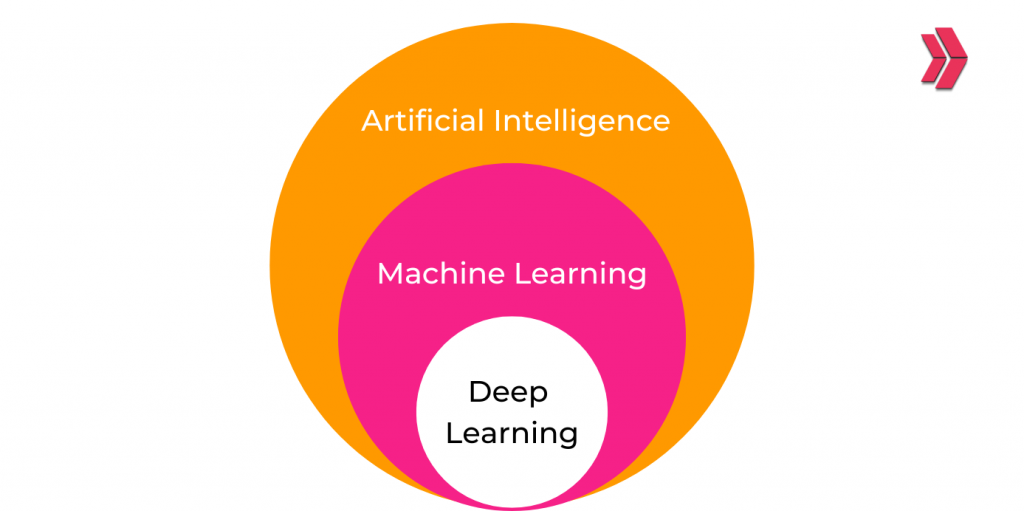
Is Machine Learning Data Science?
No, the distinction among them is that data science is a subject that specializes in studying data and extracting meaning and insights from facts. Machine learning is devoted to constructing strategies that make use of facts to enhance overall performance or make predictions.
What are the Four Fundamentals of Machine Learning?
There are four primary strategies for machine learning: supervised, unsupervised, semi-supervised, and reinforcement learning. The Four Fundamentals of Machine Learning encompass distinct approaches that underpin the process of training algorithms to make informed decisions or predictions based on data.
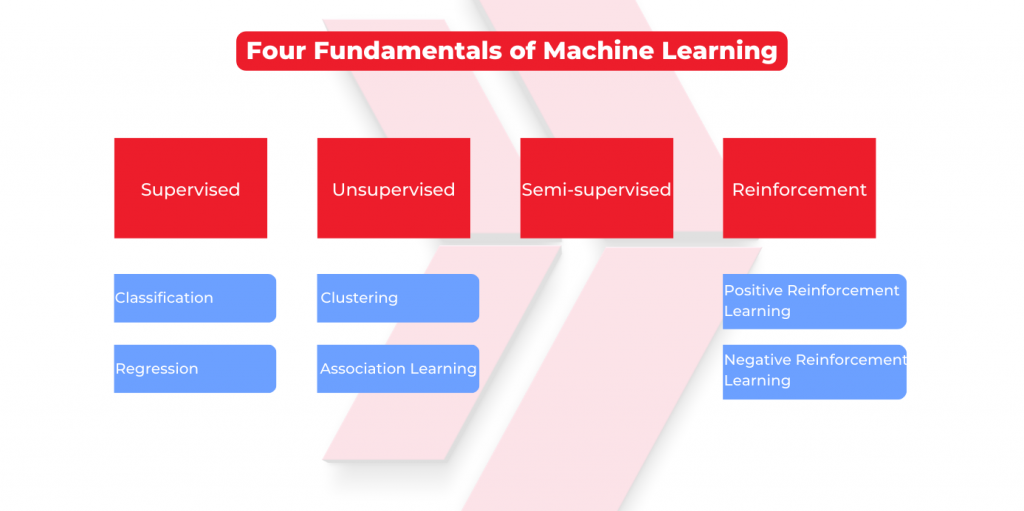
1. Supervised Machine Learning
Supervised machine learning is a type of artificial intelligence (AI) technique that involves training a model to make predictions or decisions based on labeled data. In this approach, the algorithm learns from historical data where the input examples are paired with corresponding desired outputs. These desired outputs, also known as labels or targets, guide the learning process.
Supervised machine learning algorithms are skilled in the use of classified examples, along with an entry wherein the favored output is recognized. By studying a recognized schooling dataset, the learning set of rules produces an inferred feature to expect output values. It also can evaluate its output with the correct, meant output to discover mistakes and adjust the version accordingly.
In this video, Professor Eric Grimson from MIT introduces machine learning and shows examples of supervised learning.
The most prevalent type of machine learning employed today is supervised machine learning. It may be categorized into two vast categories:
Classification
Classification is a fundamental concept in supervised machine learning. It refers to the process of training a model to assign input data points to predefined categories or classes. In other words, the goal of classification is to develop a predictive model that can accurately classify new, unseen data points into one of the known classes based on the patterns and relationships it has learned from the training data.
Regression
Regression is another crucial concept within supervised machine learning. While classification is concerned with categorizing data points into discrete classes, regression focuses on predicting continuous numerical values based on input features. In other words, regression models are used to establish a relationship between input variables and the corresponding output variable, enabling the prediction of numeric outcomes.
Support-vector machines (SVMs), additionally referred to as support-vector networks, are fixed of associated supervised learning techniques used for categorization and regression.
The use of supervised learning is appropriate when you have already identified records that correspond to the output you expect to receive.
2. Unsupervised Machine Learning
Unsupervised machine learning is a branch of artificial intelligence that deals with training algorithms to uncover patterns, relationships, and structures within data without the use of labeled outputs or guidance. Unlike supervised learning, where the model learns from labeled examples, unsupervised learning focuses on finding inherent structures within the data itself. This type of learning is particularly useful for tasks where the desired outputs are not predefined or when the data lacks clear labels.
Unsupervised learning reveals hidden styles or intrinsic systems in records. The set of rules scans via records units searching out any significant connection. It can pick out segments of clients with comparable attributes who can then be dealt with in addition to advertising campaigns. Typical packages consist of net utilization mining and marketplace records evaluation.
Unsupervised machine learning is categorized into two types:
Clustering
Clustering is a fundamental technique in unsupervised machine learning that involves grouping similar data points together into clusters based on their inherent similarities. The primary goal of clustering is to identify patterns and structures within the data without any prior knowledge of the classes or categories the data should belong to. In essence, clustering aims to find natural groupings within the data that share common characteristics or traits.
Association Learning
Association Learning is a type of unsupervised machine learning that focuses on discovering interesting relationships, associations, or patterns within large datasets. This technique is particularly useful for analyzing transactional data or datasets where items are frequently purchased or used together. Association learning aims to identify co-occurrence patterns and dependencies among items in the data.
3. Semi-supervised Learning
Semi-supervised learning is a machine learning paradigm that combines elements of both supervised and unsupervised learning. In semi-supervised learning, the algorithm is trained on a dataset that contains a mixture of labeled and unlabeled examples. This approach leverages the advantages of both labeled and unlabeled data to improve the model’s performance.
Semi-supervised learning makes use of each classified and unlabeled record for schooling. This kind of learning may be used with techniques along with type regression. The first examples of this include recognizing someone’s face on a webcam. The price related to labeling is just too excessive to permit a totally classified schooling technique.
4. Reinforcement Learning
Reinforcement Learning is a machine learning paradigm that involves an agent interacting with an environment to learn how to perform actions that maximize a cumulative reward. Unlike supervised and unsupervised learning, where the model learns from labeled data or hidden patterns in data, reinforcement learning focuses on learning through trial and error based on feedback from the environment.
Reinforcement machine learning algorithms are a learning approach that interacts with its surroundings by generating movements and coming across mistakes or rewards. The maximum applicable traits of reinforcement learning are trial and error, seeking, and being behind schedule.
The AI thing robotically takes inventory of its environment with the aid of the hit-and-trial approach, takes action, learns from experiences, and improves performance. The purpose of reinforcement learning is to research an excellent policy.
There are several additional categories of reinforcement learning approaches or algorithms:
Positive Reinforcement Learning
Positive reinforcement learning refers to including a reinforcing stimulus after a selected behavior, e.g., including praise after a preceding behavior, to make it much more likely to appear again.
Negative Reinforcement Learning
Negative reinforcement learning refers to adding a reinforcing stimulus after a specific behavior, e.g., adding a reward after a previous behavior, to make it more likely to happen again.
What are the Advantages of Machine Learning?
Listed below are some key advantages of Machine Learning:
Automatic Process:
Machine learning involves the interpretation and analysis of data using computers, eliminating the need for human intervention in predicting or interpreting data. The machine learns and applies algorithms or programs to generate accurate outcomes.
Diverse Applications:
Machine learning finds applications in various fields, including education, medicine, and engineering. It scales from small-scale applications to complex systems, aiding in predicting and analyzing data. It not only serves as a trendsetter but also offers personalized services to potential users.
Handling Complex Data:
Machine learning thrives even in uncertain and dynamic environments, effectively managing diverse datasets. Its versatility allows it to excel as a multitasker, dealing with a wide range of data types and sources.
Continuous Advancement:
As individuals gain expertise in machine learning, they continuously enhance their skills, becoming more efficient and cost-effective in their work. This progression opens up better opportunities and is championed by companies like Google, Facebook, Apple, and others.
Pattern and Trend Discovery:
With access to more data, a machine can learn patterns and trends effectively. As the volume of data increases, machine learning becomes better at recognizing patterns and capturing underlying trends.
Education Enhancement:
Machine learning serves as an educational facilitator, keeping students updated with real-world situations. It enables quality courses, distance learning, and e-learning for students at various levels. Similar advancements are seen in sectors like e-commerce, keeping consumers informed.
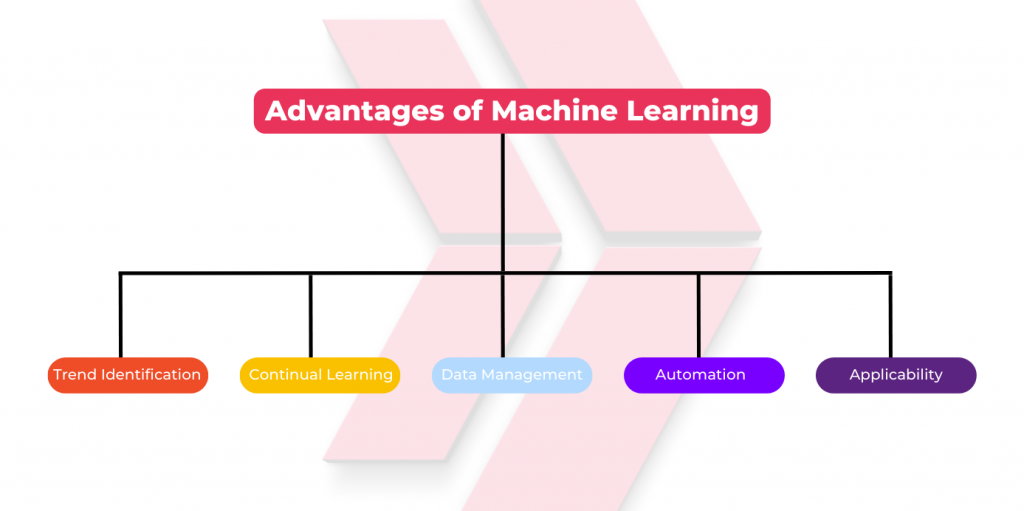
Who’s the User of Machine Learning?
The user of machine learning is a diverse group of professionals and industries that harness the power of machine learning techniques to solve complex problems, make data-driven decisions, and optimize processes. Some of the most popular jobs are as follows:
Machine Learning Engineer
Machine learning engineers create and deploy machine learning models, develop and enhance data pipelines and data delivery, and put together huge, complicated data sets.
Robotics Engineer
A Robotics Engineer employs machine learning to develop and improve computer vision systems that enable robots to process and interpret vast amounts of visual data. This enables robots to navigate, interact, and make decisions in real-world environments, enhancing their autonomy and capabilities.
Natural Language Processing (NLP) Scientist
A natural language processing scientist utilizes algorithms to determine the rules that make up the language in order to enable computers to speak and interpret natural language. Take a peek at ChatGTP to see this in action. The NLP Scientist uses computers to “understand, analyze, and manipulate human language.” Bridges the gap between human communication and machine comprehension using computer science and computational linguistics.
Software Developer
Software developers create mobile and desktop applications as well as basic operating systems. They utilize machine learning to analyze data and predict how customers will react to specific features of an application.
Software Engineer
A Software Engineer utilizes machine learning to analyze and predict user behavior, enabling the creation of more personalized and efficient applications. They integrate machine learning algorithms into software systems to enhance features like recommendation engines, fraud detection, and user interaction, leading to improved user experiences and outcomes.
Data Scientist
Data scientists use machine learning and predictive analytics to gather, analyze, and interpret large amounts of data in order to help companies make better decisions, optimize operations, and improve products. Machine learning is used more in data science jobs than in other fields.
Human-Centered Machine Learning Designer
A Human-Centered Machine Learning Designer is responsible for creating an information system that enables humans to interact with machines in an intuitive, productive, and meaningful way. To answer inquiries and solve issues, these specialists use human behavior and data-driven forecasts. Their responsibilities include developing AI-based technologies and designing apps and solutions with programming abilities.
Computational Linguists
Computational linguists work on developing ML systems capable of doing speech recognition, machine translation, and text mining. They create these systems from start to finish, collaborating with engineers to create software that is compatible with human language. They must be proficient in data analysis, natural language processing (NLP), Python, Java, Linux, and other programming languages.
Cybersecurity Analyst
Cybersecurity analysts are responsible for determining the best strategies to protect a company’s digital infrastructure and assets. This requires the use of several technologies, which may be greatly simplified by machine learning. This is due to the fact that a Cybersecurity Analyst is required to gather and analyze enormous volumes of data that indicate the vulnerabilities and dangers that a firm may face.
Artificial Intelligence (AI) Engineer
An Artificial Intelligence (AI) Engineer employs machine learning to develop intelligent systems that can perform tasks similar to human intelligence. They use machine learning algorithms to enable AI systems to learn from data, make predictions, recognize patterns, and adapt their behavior, leading to the creation of advanced AI applications and technologies.
Which Industries Use Machine Learning?
Industries across various sectors leverage machine learning to gain competitive advantages through real-time analysis of large datasets. Here are some examples of what you may see each day in machine learning utility sectors together with finance, retail, healthcare, and extra.
Social Media
The social community makes use of machine learning to apprehend acquainted faces in customers’ touch lists and allows automatic tagging. With ML, billions of customers can effectively interact on social media networks. Additionally, it is pivotal in using social media structures, from personalizing information feeds to turning in user-unique ads.
Speech Recognition
In speech recognition, machine learning enables devices and systems to accurately transcribe spoken language into text, facilitating voice commands and interactions.
Customer Service
In customer service, machine learning enhances support interactions by automating responses, analyzing sentiment, and providing personalized recommendations to improve user experiences.
Computer Vision
This AI generation permits computer systems to derive significant statistics from virtual pictures, motion pictures, and different virtual inputs.
Recommendation Engines
The recommendation engines at the back of Netflix and YouTube suggestions, what statistics seem for your Facebook feed, and product guidelines are fueled by machine learning.
Automated Inventory Buying and Selling
The modern-day era of AI-pushed high-frequency buying and selling structures makes hundreds or maybe hundreds of thousands of trades in step with the day without human intervention.
Fraud Detection
Machine learning is being used inside the monetary and banking zone to autonomously examine large numbers of transactions to discover fraudulent pastimes. Anomaly detection can discover transactions that appear odd and deserve a similar investigation. Machines can examine styles, like how a person generally spends or wherein they generally shop, to discover fraudulent credit score card transactions.
Medical Imaging and Diagnostics/Healthcare Industry
Machine learning is being increasingly followed inside the healthcare enterprise, from credit scores to wearable gadgets and sensors, including wearable health trackers, clever fitness watches, etc. Additionally, the technology is supporting scientific practitioners for;
- Affected person diagnoses
- Treatment
- Drug discovery
- Customized treatment
- Boost up the discovery of remedies and cures
- Enhance affected person outcomes
- Automate ordinary strategies to save you from human error
Image Evaluation and Item Detection
Machine learning can examine photos for specific information, like studying to perceive human beings and inform them apart — even though facial reputation algorithms are controversial.
Data Security
By searching beyond experiences, machine learning models can predict expected destiny in high-danger sports so that danger may be proactively mitigated.
Finance
Banks, buying and selling brokerages, and fintech corporations use machine learning algorithms to automate buying and selling and to offer economic advisory offerings to traders to determine while to trade.
Retail
Retailers use machine learning strategies for;
- Applicable product suggestions.
- Advertising campaigns.
- Consumer insights.
- Consumer products planning.
- Rate optimization.
- Digital assistants or conversational chatbots.
primarily based on buyers’ purchase histories and historical, geographic, and demographic facts.
Travel Enterprise
The journey enterprise makes use of system studying to research personal feedback;
- Classify advantageous or bad scores.
- Marketing campaign monitoring.
- Emblem monitoring.
- Compliance monitoring.
Government
Government companies, including public protection and utilities, use machine learning for;
- Insights.
- Identifies methods to boost efficiency.
- Store money.
- Come across a fraud.
- Decrease identification theft.
Oil and Gasoline
Oil and fuel line zones use machine learning for;
- Locating new sources of power.
- Analyzing the ground’s mineral composition.
- Predict sensor failure at a refinery.
Transportation
Public transportation and different transportation agencies use machine learning for;
- Making routes extra efficient.
- Predict capacity troubles to boom profitability.
How to Study Machine Learning?
To effectively study machine learning and prepare for a career in this field, consider the following steps:
- Build a Strong Foundation:
- Start by understanding the basics of programming, mathematics (linear algebra, calculus, and statistics), and data manipulation.
- Familiarize yourself with relevant programming languages like Python, which is widely used in the machine learning community.
- Learn the Fundamentals of Machine Learning:
- Begin with the fundamentals of machine learning concepts, including supervised and unsupervised learning, overfitting, underfitting, bias-variance trade-off, and cross-validation.
- Online Courses and Resources:
- Enroll in reputable online machine learning courses or programs, such as Clarusway’s Machine Learning Course, to get structured learning and hands-on experience.
- Utilize online resources like tutorials, blogs, and video lectures to deepen your understanding.
- Practice with Real-world Datasets:
- Work on real-world datasets to gain practical experience. Platforms like Kaggle offer datasets and competitions that allow you to apply machine-learning techniques.
- Explore Algorithms and Models:
- Learn about various machine learning algorithms and models, such as linear regression, decision trees, support vector machines, and neural networks.
- Understand when and how to use different algorithms for different types of problems.
- Implement Projects:
- Create your own machine-learning projects to apply what you’ve learned. Projects demonstrate your skills to potential employers and help solidify your understanding.
- Experiment and Iterate:
- Experiment with different algorithms, hyperparameters, and techniques to understand their impact on model performance.
- Iteratively refine your models based on insights gained from experimentation.
- Learn About Deep Learning :
- Delve into deep learning, a subfield of machine learning focused on neural networks and their applications.
- Stay Updated:
- Machine learning is a rapidly evolving field. Stay up-to-date with the latest advancements, research papers, and industry trends.
- Networking and Collaboration:
- Join machine learning communities, conferences, workshops, and meetups to connect with professionals in the field.
- Collaborate on open-source projects to enhance your skills and visibility.
- Build a Portfolio:
- Showcase your projects, code, and insights on platforms like GitHub. A strong portfolio demonstrates your expertise to potential employers.
- Seek Internships or Entry-level Positions:
- Apply for internships or entry-level positions in companies that use machine learning.
- Gain practical experience and learn from experienced professionals in a real-world setting.
- Continuous Learning:
- Machine learning is constantly evolving. Keep learning and adapting to new techniques and technologies.
Clarusway’s Machine Learning Course will put you on the path to success in this fascinating field. Clarusway IT Bootcamp offers you in-intensity and realistic know-how on using the system in actual international cases by using real-world datasets. Through Machine Learning training, you will use performance metrics to evaluate and update machine learning models in a production environment. Additionally, Clarusway provides various payment options to make the program work for you. Are you ready to give your career a boost?
Last Updated on September 8, 2023

